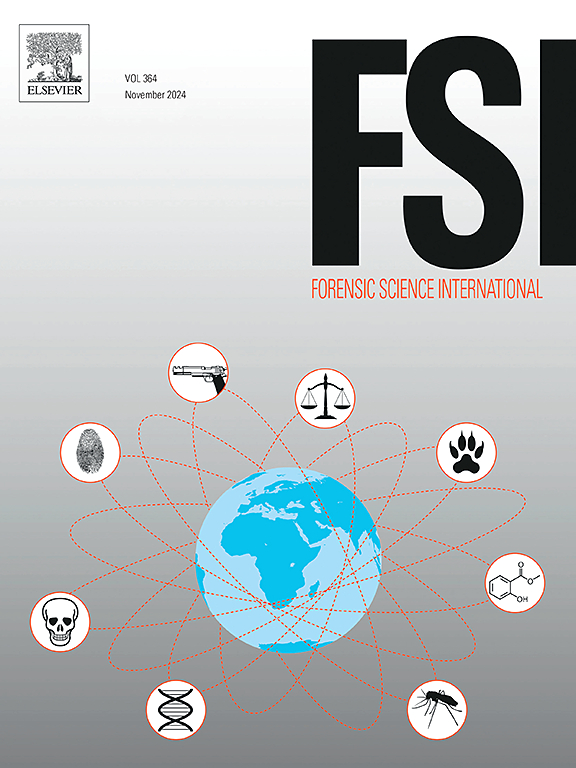Enhanced detection of measurement anomalies in cartridge cases using 3D gray-level co-occurrence matrix
IF 2.2
3区 医学
Q1 MEDICINE, LEGAL
引用次数: 0
Abstract
The firing pin impression left on the base of a cartridge case is a critical analytical feature in forensic science. To address the limitations of traditional manual trace analysis and mitigate the risk of secondary damage to physical evidence, we employ a line laser displacement sensor to capture and analyze three-dimensional (3D) traces of fired cartridge cases. However, when using laser displacement sensors to collect traces from metal cartridge cases, the high curvature and reflectivity of the metal surface can cause specular reflections, potentially leading to measurement anomalies in the firing pin impressions. To effectively identify these anomalies during automated trace analysis, this paper proposes an automated detection method. This method extends the gray-level co-occurrence matrix (GLCM), which is traditionally used for two-dimensional (2D) images, to the 3D scenarios, enabling the extraction of texture features from the 3D traces of cartridge cases. A support vector machine (SVM) is then employed to detect and classify measurement anomalies. Experiments with 2038 sets of firing pin impression data from cartridge cases demonstrated a detection accuracy of 98.92 %, validating the effectiveness of the proposed method. We hope this method can be widely adopted in forensic laboratories to improve the reliability of evidence analysis.
利用三维灰度共现矩阵增强对弹壳测量异常的检测。
在弹壳底部留下的击发针印是法医学中一个重要的分析特征。为了解决传统手工痕迹分析的局限性并降低对物证的二次损坏风险,我们采用了直线激光位移传感器来捕获和分析发射弹壳的三维(3D)痕迹。然而,当使用激光位移传感器收集金属弹壳的轨迹时,金属表面的高曲率和反射率可能会引起镜面反射,从而可能导致击针印痕的测量异常。为了在自动跟踪分析中有效地识别这些异常,本文提出了一种自动检测方法。该方法将传统上用于二维(2D)图像的灰度共生矩阵(GLCM)扩展到3D场景,从而能够从弹壳的3D轨迹中提取纹理特征。然后利用支持向量机(SVM)对测量异常进行检测和分类。对2038组弹壳击针压痕数据进行实验,检测准确率为98.92 %,验证了该方法的有效性。希望该方法能在法医实验室广泛应用,提高证据分析的可靠性。
本文章由计算机程序翻译,如有差异,请以英文原文为准。
求助全文
约1分钟内获得全文
求助全文
来源期刊

Forensic science international
医学-医学:法
CiteScore
5.00
自引率
9.10%
发文量
285
审稿时长
49 days
期刊介绍:
Forensic Science International is the flagship journal in the prestigious Forensic Science International family, publishing the most innovative, cutting-edge, and influential contributions across the forensic sciences. Fields include: forensic pathology and histochemistry, chemistry, biochemistry and toxicology, biology, serology, odontology, psychiatry, anthropology, digital forensics, the physical sciences, firearms, and document examination, as well as investigations of value to public health in its broadest sense, and the important marginal area where science and medicine interact with the law.
The journal publishes:
Case Reports
Commentaries
Letters to the Editor
Original Research Papers (Regular Papers)
Rapid Communications
Review Articles
Technical Notes.
 求助内容:
求助内容: 应助结果提醒方式:
应助结果提醒方式:


